These Are the Disgusting Spots You Should Never Touch on a Plane
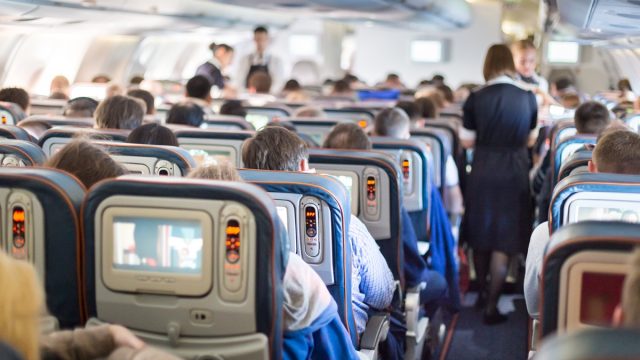
Air travel is hardly the glamorous and romantic adventure it was in the 1960s. These days, flight delays are growing more frequent, seats have shrunk, and fares are only projected to climb higher and higher. But there’s another gross downside that many jet-setters might not think about: the germs. Yes, planes are cesspools in the sky. They’re even likely to have E. coli, staph, and hemolytic bacteria on board. To find out which areas, specifically, you should never touch, we spoke to aviation professionals and cleanliness experts to pinpoint the grossest spots on a plane. So read on—and don’t forget to pack a bottle of Purell in your carry-on!
1
Tray tables
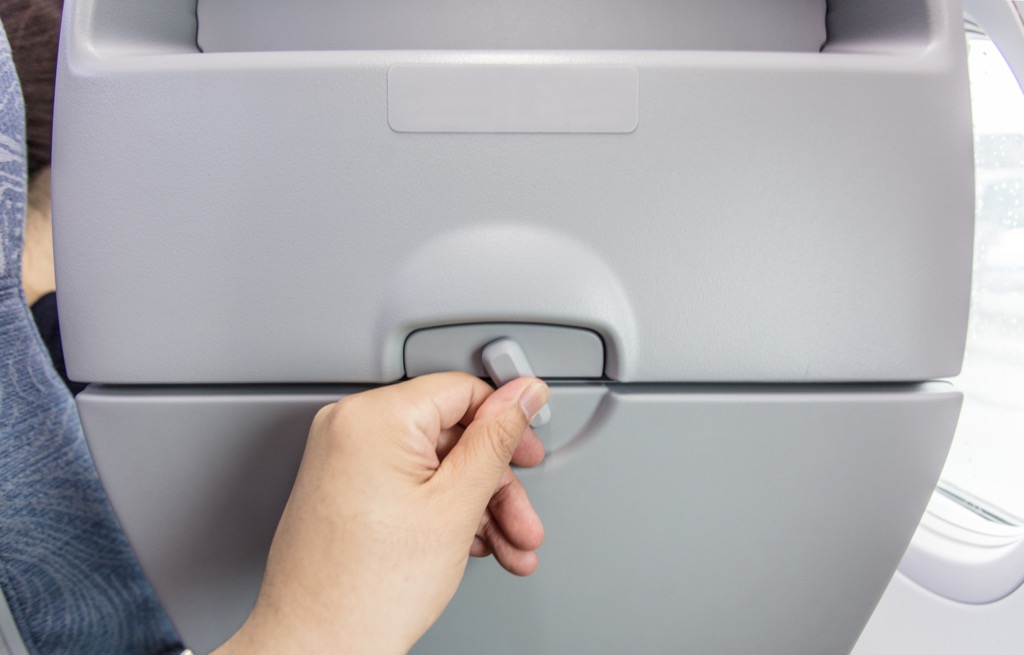
Tray tables “are easily the dirtiest place on the aircraft, and have been reported to carry eight times more bacteria than the toilet flush button,” says Shamir Patel, a U.K.-based pharmacist and the director of Chemist-4-U. “This is usually because the flight crew doesn’t have time to sanitize every single one, whereas there are only a handful of toilet flush buttons.”
Indeed, in 2018, the Canadian Broadcasting Corporation (CBC) analyzed more than 100 samples taken from 18 different flights, and found that tray tables contain high levels of staph and mold—which could cause skin and soft-tissue infections, like boils.
2
Headrests
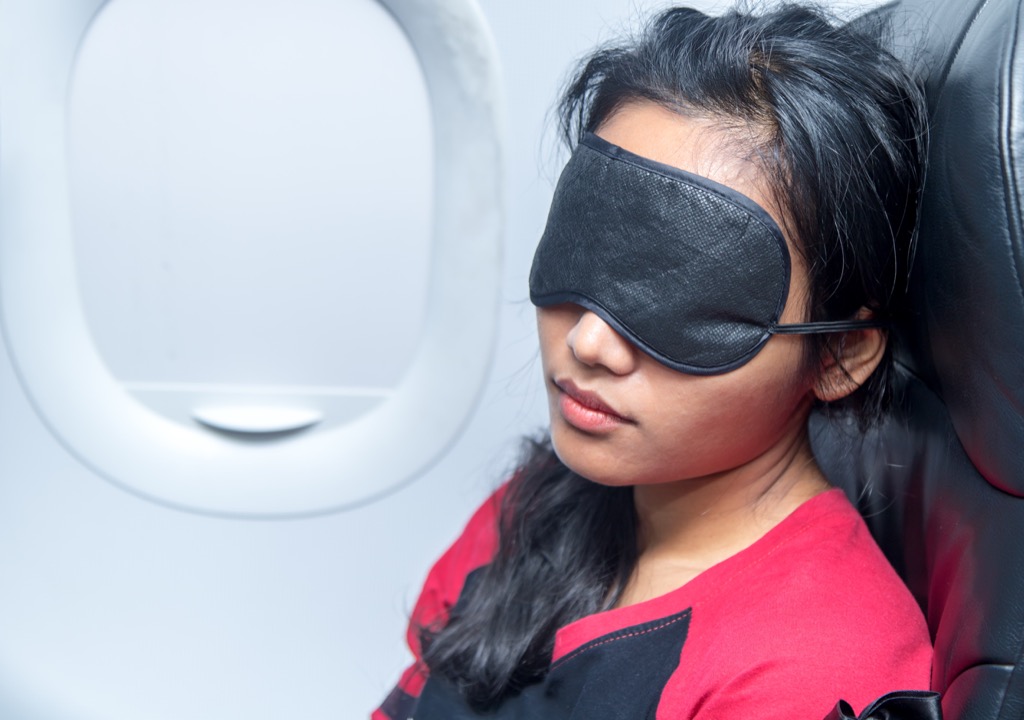
You may want to think twice before placing your head directly onto the headrest. The CBC’s investigation found staph as well as hemolytic bacteria—that’s the kind that causes strep throat—on the headrests.
“Headrest covers are regularly checked for ‘cleanliness,’ but they’re rarely changed after every short haul flight, and there can be four or five flights every single day,” Patel explains. “And if the seat comes into contact with a passenger with head lice, it’s very probable that some of the bugs could linger in the headrest.” Yuck!
3
Seat-back pockets
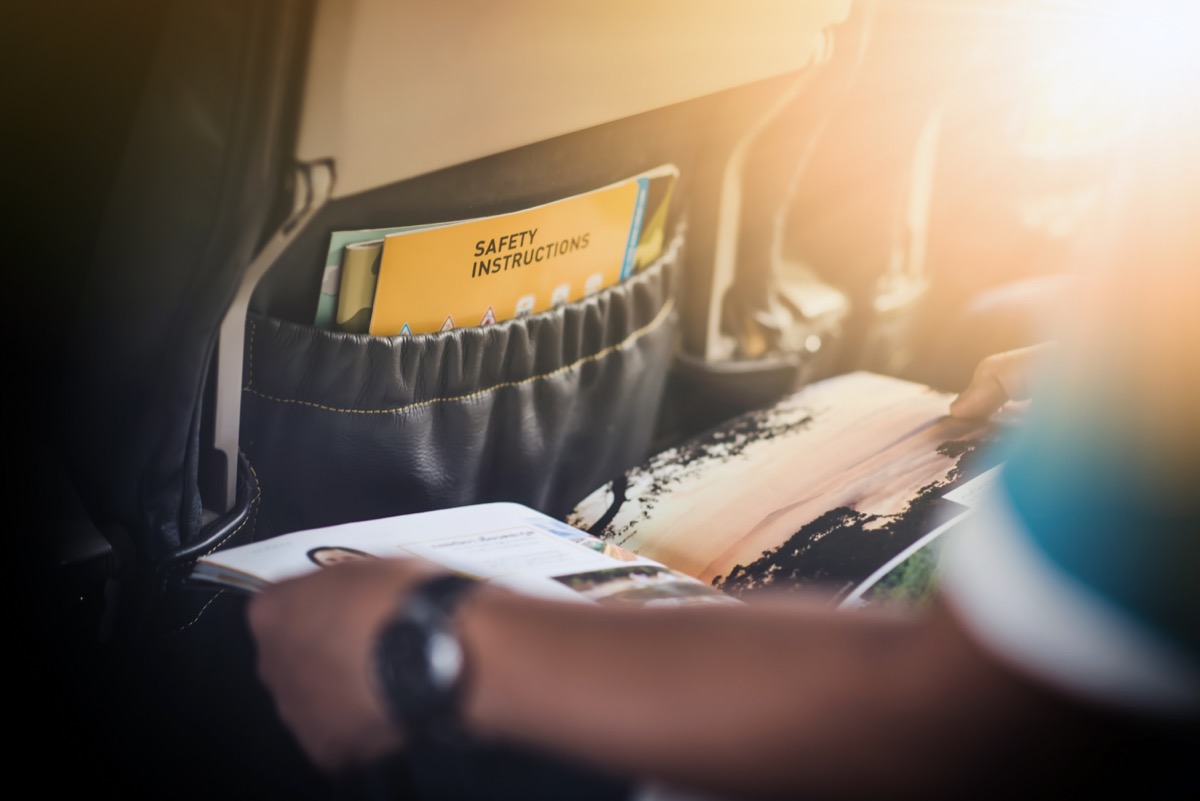
The CBC’s investigation found that the seat pocket had the second-highest level of bacteria on it (after the headrest) and was full of E. coli, which indicates that there could have been some degree of fecal contamination. It’s no wonder: Their research turned up a number of gross objects placed in the seat pocket, including dirty diapers.
4
Lavatory locks
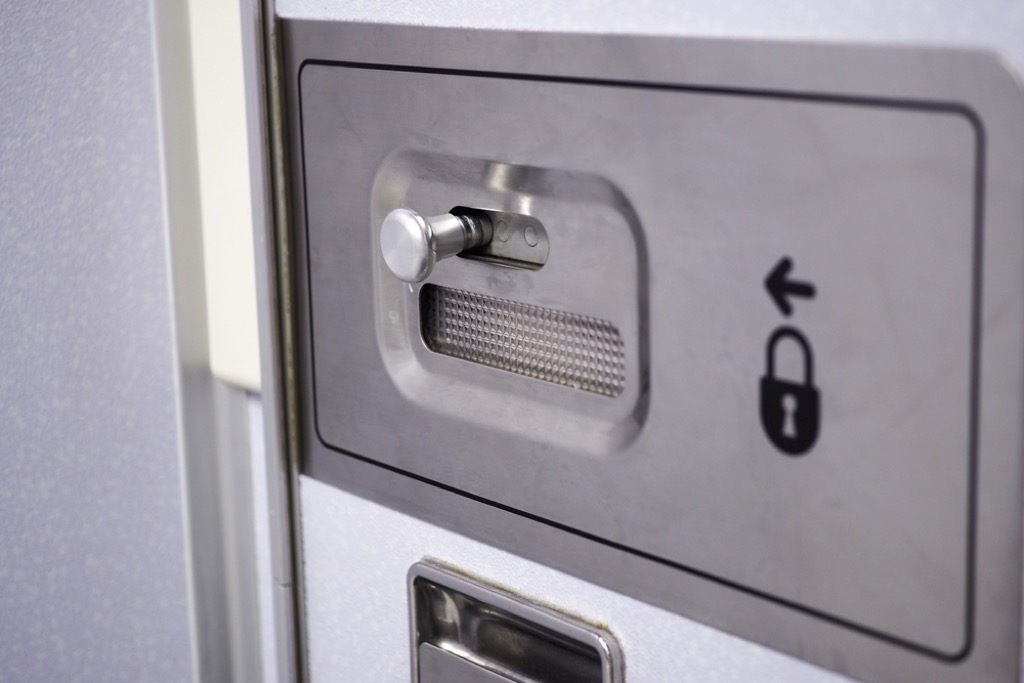
Those little sliding doorknobs you touch when you go in or out of the bathroom are not the cleanest. “After touching it, you should clean your hands—stat,” says Arthur Ruth, the vice president of operations of Memphis Maids.
What’s more, when the CBC conducted their investigation, they found high levels of hemolytic bacteria on the bathroom door handles.
5
Bathrooms
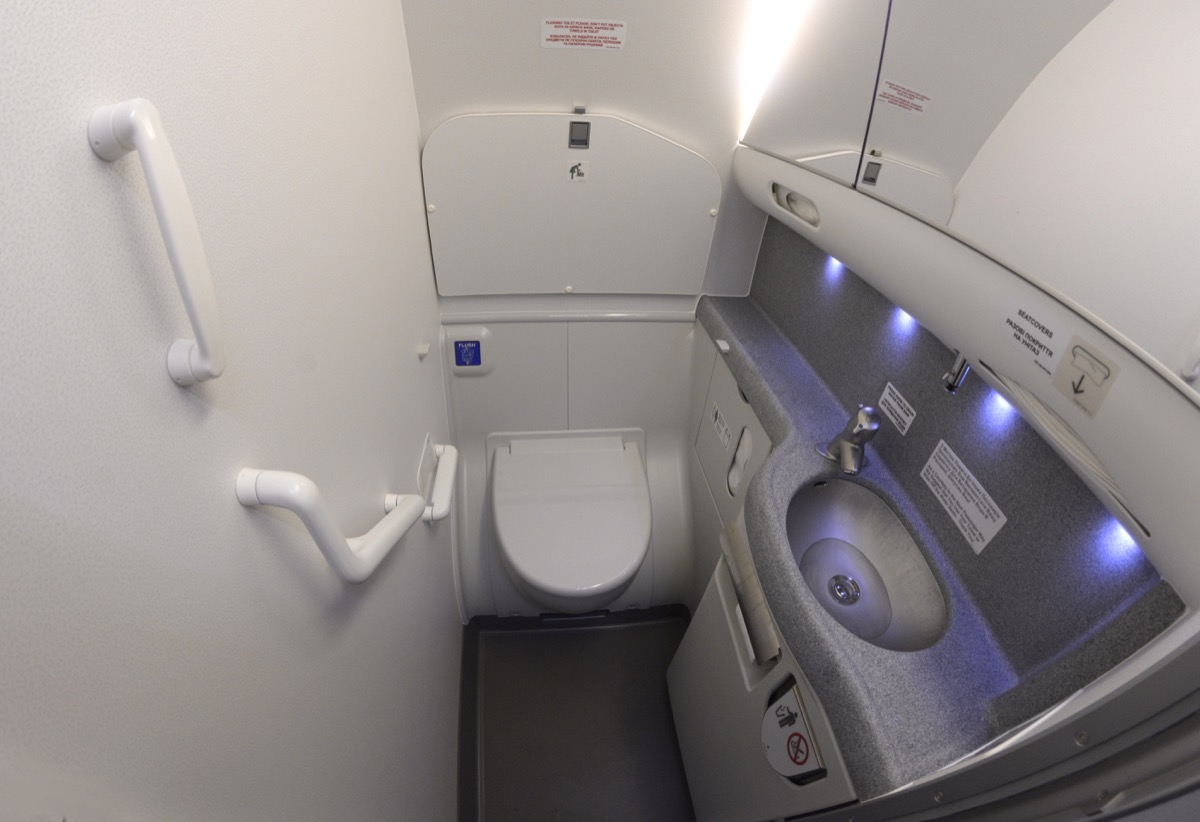
Charles Gerba, a microbiologist at the University of Arizona and a leading researcher in the field of unsanitary aviation, told Time in 2017 that he’s found fecal chloroform E.coli on some of the sinks, flush handles, and toilet seats he tested on airplane bathrooms.
And even though airplane bathrooms are cleaned when the aircraft lands, that doesn’t mean they can’t get gross en route to your final destination. “Depending upon the carrier, you could be sharing your facility with 50 others,” says Brett Manders, an international airline pilot and author of the book Behind the Flight Deck Door: Insider Knowledge About Everything You’ve Ever Wanted to Ask a Pilot. “If it’s a long flight, that adds up to a great many visits to a cramped little space.” As Manders points out, it only takes a little turbulence to throw off someone’s aim or cause splash water from the sink. If you can, wait to use the bathroom on steady ground.
6
Seat tops
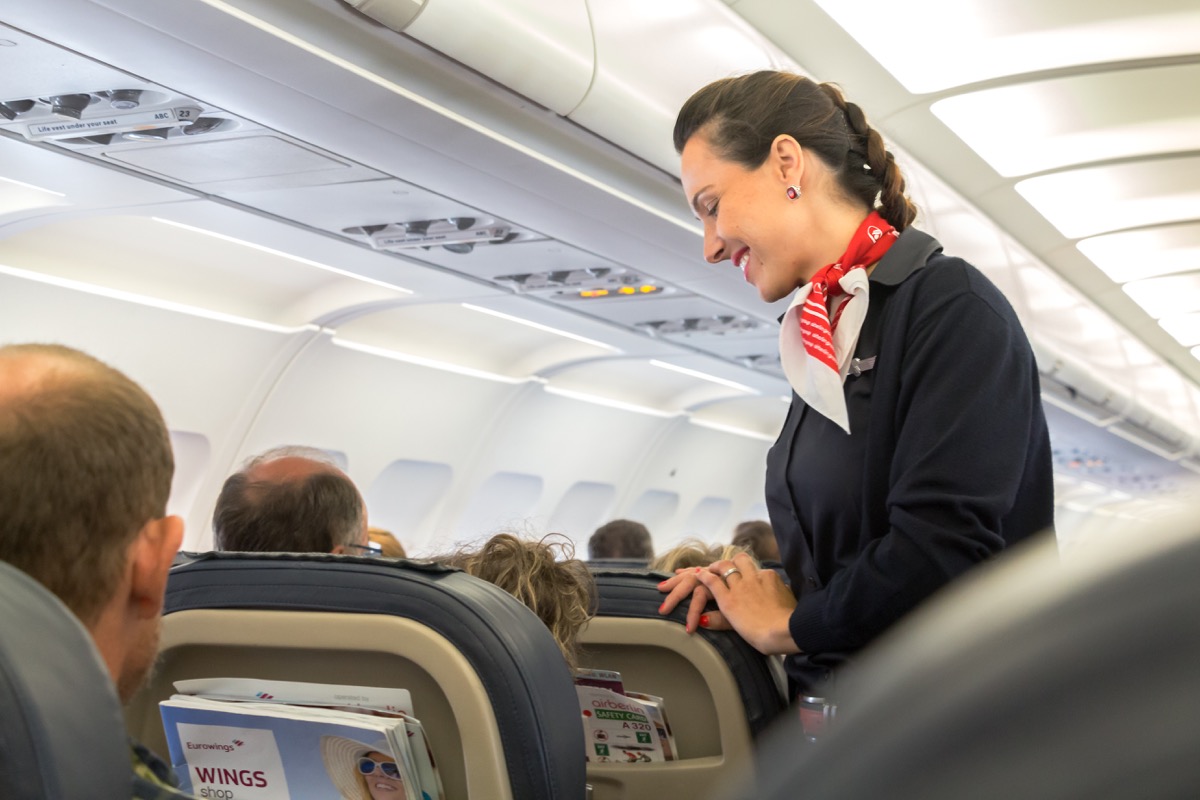
After testing approximately 100 planes across many airlines, Dimer UVC Innovations determined that “the dirtiest place on an airplane is the [top of the] aisle seat,” noted Elliot Kreitenberg, an expert in infection prevention in aviation, and the co-founder and president of Dimer. “Nearly every passenger and crew member touches that surface as they walk through the plane.”
7
In-flight magazines

It’s tempting to reach into the seat-back pocket and peruse the in-flight magazine while you’re waiting for takeoff, but that might not be the best idea. Why? Simple: “Most people lick their fingers before turning a page,” says Cindy Richards, an editor for TravelingMom.com. Yeah… We’ll stick with the latest James Patterson novel, instead.
8
Overhead air vents

If you’re wondering where the most germ-besotted places on an airplane are located, Patel suggests thinking of places that are often touched, but rarely cleaned. One example? The overhead air vents. Of course, cabins get stuffy, so there have probably been a lot of hands on that nozzle.
In fact, in 2015, when the folks at Travel Math conducted an investigation into the cleanliness of airplanes, they found that overhead air vents contain 285 colony-forming units (CFU) of bacteria per square inch.
9
Seatbelt buckles
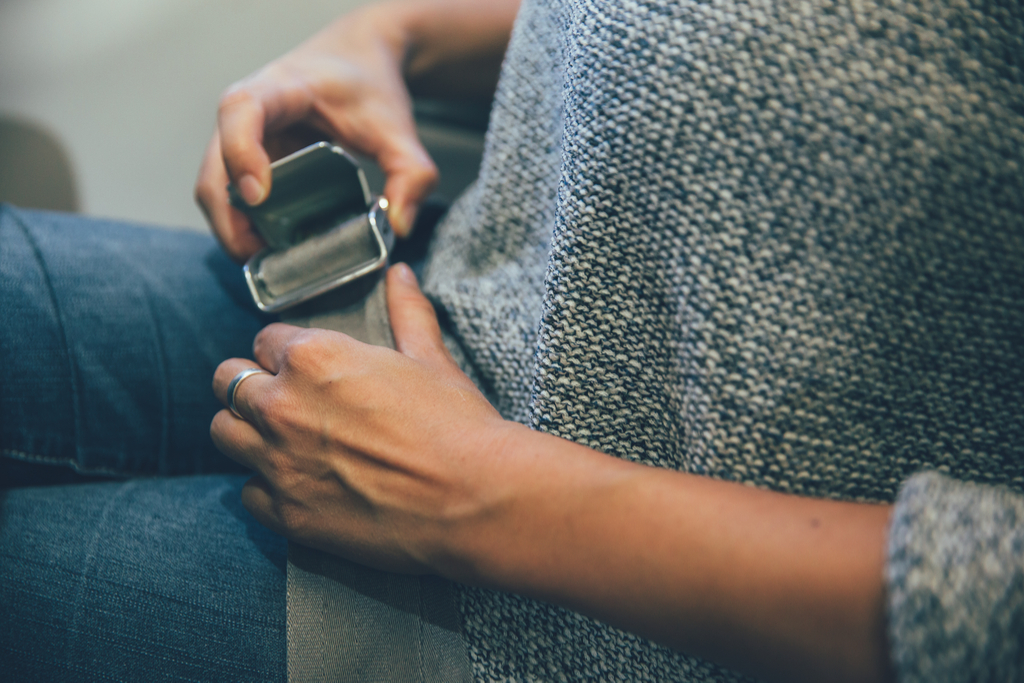
Part of a flight attendant’s job is making sure that everyone’s seat belts are buckled. And while that’s absolutely a very important safety precaution, it’s not great from a germ perspective. A 2018 investigation by The Today Show found that seatbelts and buckles are highly contaminated with bacteria, including acinetobacter, which, according to the Centers for Disease Control and Prevention (CDC), accounts for around 80 percent of reported infections.
“People think about wiping down the seat-back tray and maybe the armrests, but everyone touches the seatbelt,” Richards says.
10
Interior walls
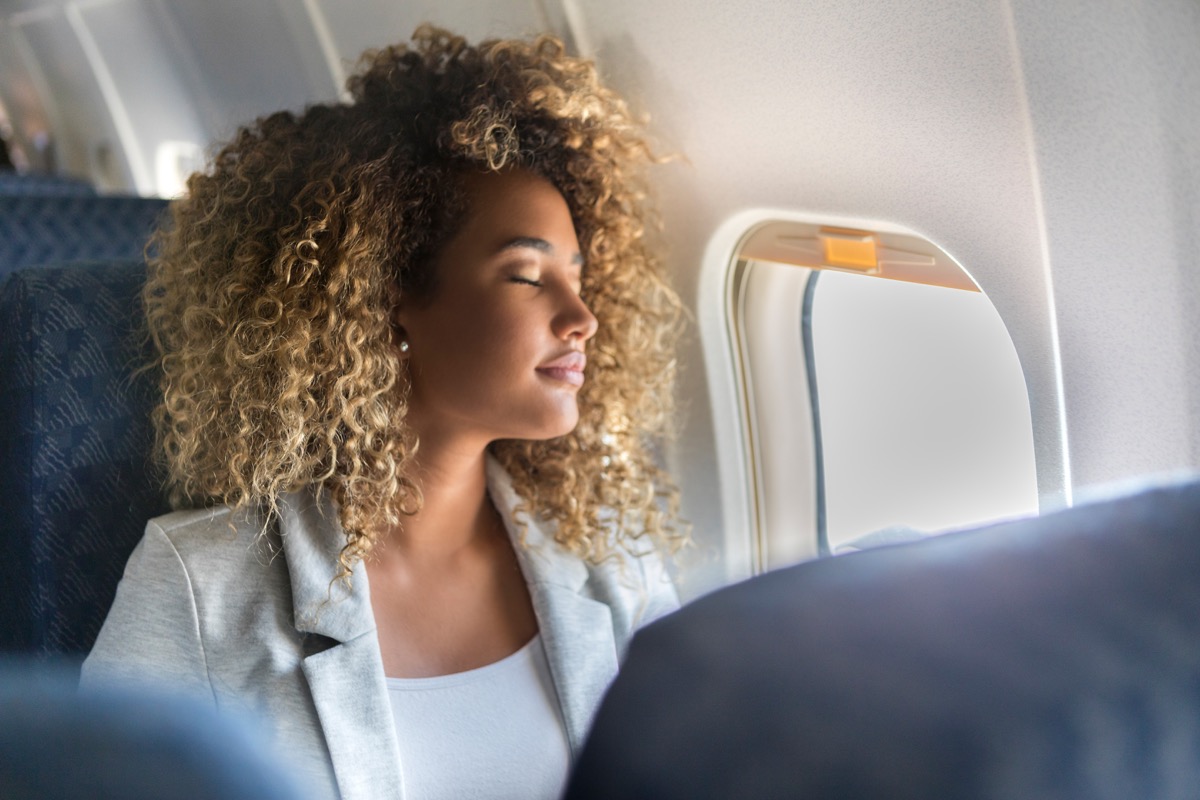
If you’re someone who prefers the window seat, it’s probably because you’re able to lean on the wall and get some rest. But those walls can get grimy for exactly that reason, says Joanne Archer, a cleaning guru from Expert Home Tips. “How many people lean to the sidewall for a little snooze?” she cautions. “Far too many! Mouth-breathers and snorers alike are bound to be covering these areas in germs.”
11
Entertainment screens
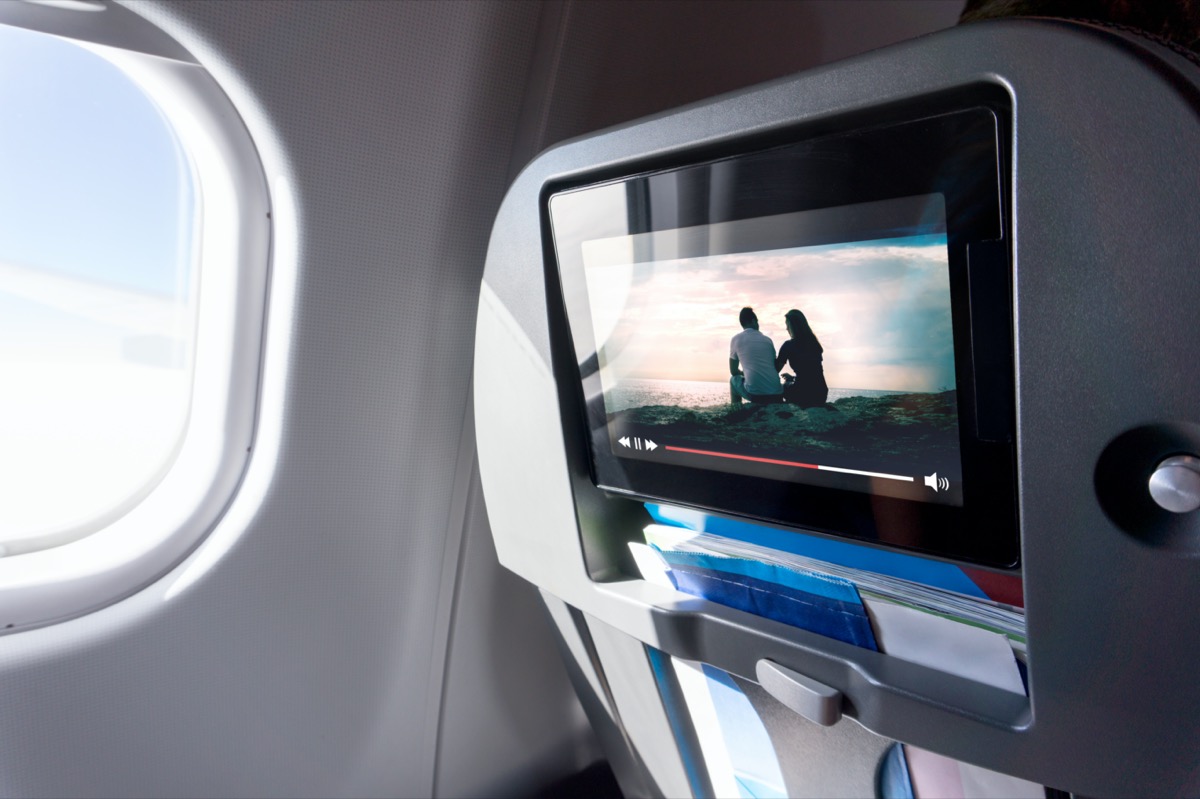
Many modern models of planes come with built-in screens, allowing you to select TV shows or movies from a robust Netflix-like library. These entertainment options may make the flight feel less arduous, but the screens could also be exposing you to a wide range of germs. Archer says that if you opt to use this feature, make sure to wipe the screen down with a disinfectant first.
12
Armrests
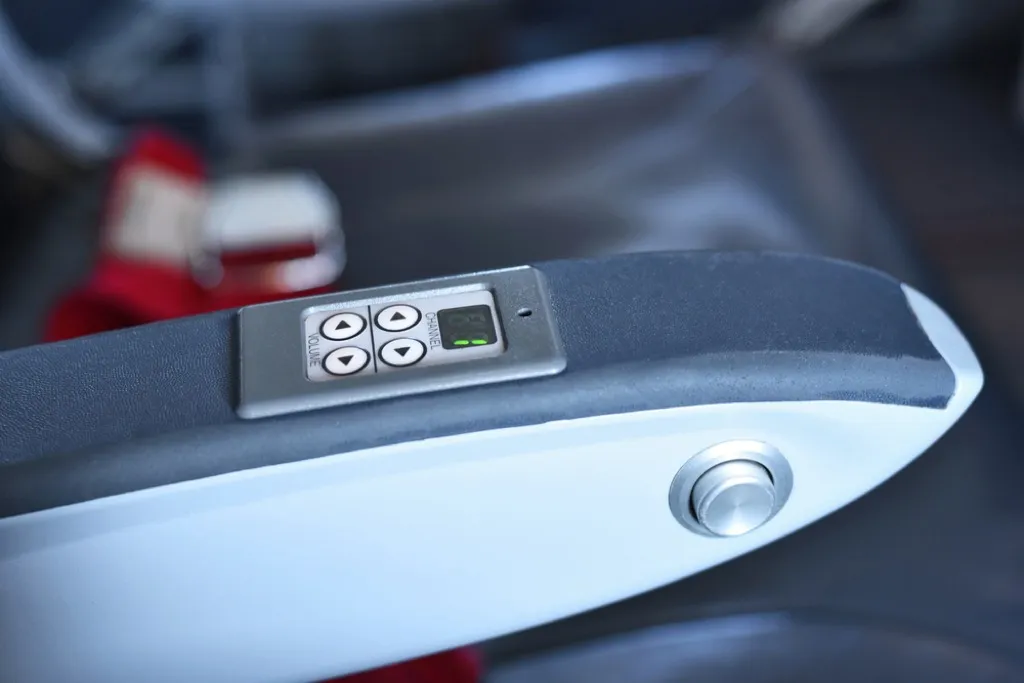
Armrests are coveted real estate on airplanes. And with everyone vying for the privilege of using one, it’s no wonder they can get gross. Plus, as Archer notes, “kids love to put their hands and feet all over them.”
13
Floors
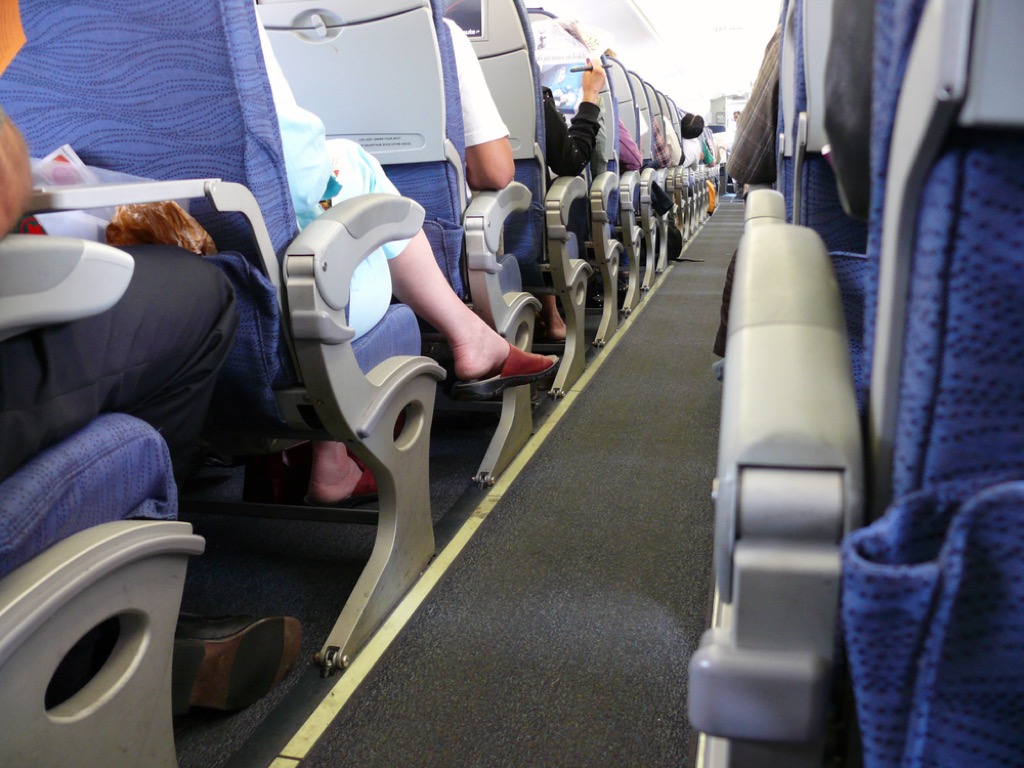
Surely, this won’t surprise you, but the floor of the airplane is teeming with germs. “Just think of hundreds of pairs of feet walking up and down per flight—hundreds of flights per year,” says Anthony Bianco, a travel writer at The Travel Tart. “I also had one of my friends tell me about a flight he took overseas where the toilet failed, and the toilet water started gushing down the aisle. No further explanation needed!”
14
Pillows and blankets
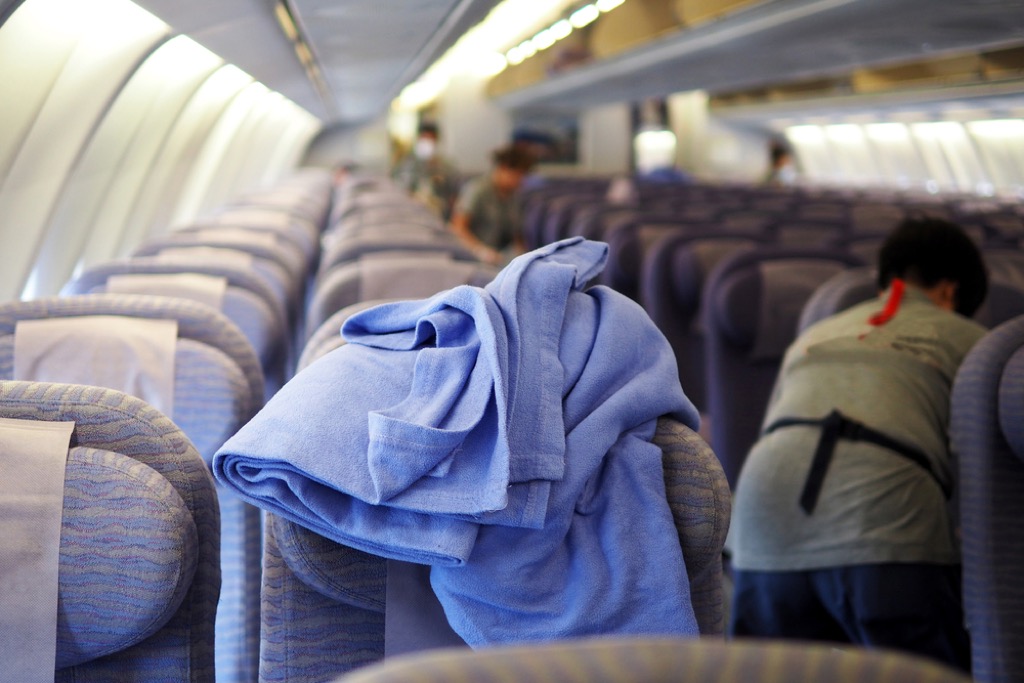
If they’re not coming out of sealed bags, chances are those airplane blankets and pillows are disgusting, according to a USA Today report. “I see them thrown in the overhead compartments,” John Gobbels, vice president and COO of Medjet Assist, which arranges air medical transport for its members, told the paper. “And for more dirty details, hear the 23 Things That Totally Horrify Flight Attendants.